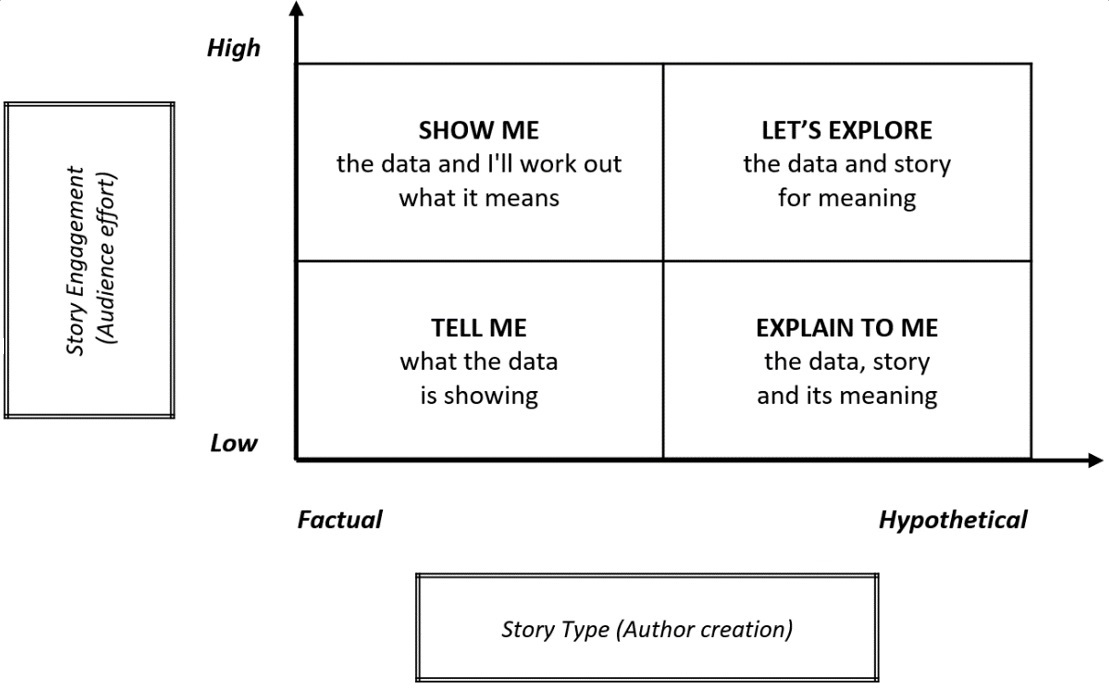In this video, Saurabh Jain, VP Business Performance Controlling at Siemens Healthineers, shares his tips for...

In this article, we will explore why storytelling is and has always been, an essential skill for FP&A and why it can be complicated to execute in practice.
Crafting a story is a creative task. Financial Planning and Analysis (FP&A) has to work on these skills to build up their confidence as they take a step away from the comfort zone of doing the analysis.
Two Essential Elements in Effective FP&A Storytelling
From the beginning of time, humans have been driven to action by stories. Today, with the explosion of data, analysis, and visualisation tools, the challenge is not in developing the “picture” but in translating the numbers into a narrative. More importantly, a narrative that will help decision-makers within an organisation take considered action toward desired objectives. In other words, the missing piece is often the story.
FP&A exists to support effective decision-making and sound business planning, essentially to ensure resources are allocated effectively. To do this, FP&A works with data and information from various sources and pulls together analysis and reports that drive the business to take action.
However, this is not simple. For a story to be told successfully, there need to be two sides:
- One: the creator of the story, the author, in this case, FP&A.
- Two: the consumer of the story, the audience, and, in this case, the business.
Analysis and Reporting Are Only Part of the Job
FP&A works in the domain of the Information Value Chain. The table below summarises the Information Value Chain and the responsibility areas of FP&A within it. For the purpose of this article, FP&A would also cover business control.

Figure 1: Information Value Chain
Although analysis plays a major role in FP&A, it is only part of the job. How often have you sat through mind-numbing presentations or read reports filled with analysis only to leave with questions like: “So what?”, and "Now what?” or “Did we agree on anything?”
Dashboards can no longer solve this issue. Data visualisation basically takes the same raw material, the data, and presents it in powerful, graphical, and visual ways that can create better insights. Yet, as Business Intelligence grows, it is likely that businesses have lost track of how many dashboards they have and how effectively they are being used.
So, what is going wrong? If we look at the above image, we will see that the chain does not mention storytelling. Besides, it is also important to remember that there are different audience types with different needs. It, therefore, appears that the “Information Value Chain” is missing some important elements. A more effective representation would look like the below:

Figure 2: Two additional elements in the Information Value Chain
The first critical step is the problem definition. While it is not covered in this article, it is perhaps the most critical stage to do well. At this point, the audience and the story type are being defined. FP&A might need to start by spending some quality time with its audience to better understand its needs.
To turn insights into decisions, FP&A needs to implement an appropriate story design.
Creating a Great FP&A Story: Ten Things to Consider
Key consideration 1: You need to have a clear message
The key point of a story lies in its message. Without a message, the audience will not know what is expected from them.
Key consideration 2: The analysis should support the story and the key message
The analysis is rarely the message. Presenting analysis is not what the audience needs because no matter how it is presented, it rarely motivates human activity. And, after all, human activity is what drives performance. If the analysis does not support the story, it needs to be removed.
Key consideration 3: Keep in mind your key message and the audience
There are two basic types of story that are relevant in an FP&A context:
- Factual or declarative: This is the communication of information.
- Hypothetical or exploratory. This is the process of figuring something out.
The audience engages with the story in two ways:
- With little effort due to time constraints or lack of expertise
- Deeply, where a strategically important topic is being covered
We can thus represent this in the following way:

Figure 3: Story Type and Story Engagement
Key consideration 4: Summarise your message in one sentence
In a time-constrained situation, there may not be an opportunity to explore the richness of the whole story. An outline of the story, the key takeaway, cannot be neglected.
Key consideration 5: Ensure that your context is relevant
Elements of a story can be misleading if presented in isolation. A relevant context is required and can be provided in various ways. For example, the inclusion of relevant comparators or trends should be included; explanations should be made using analogies, or descriptions of potential implications and interpretations should be described.
Key consideration 6: Start with the takeaway
Traditionally, the presentation of analysis is followed by relevant insights and perhaps some messages and takeaways. This is not effective. It is better to invert the process. First, present the takeaway, then the message that supports it, and finally, the analysis that supports the message.
Key consideration 7: End your presentation on a positive note or at least avoid a negative note
The audience is made up of individual human beings. How they feel about the story will depend not only on the message but also on their end emotional state after the discussion. Messages may be positive, negative, or neutral. However, it is good practice to end with a positive message to induce a positive emotional state in the audience.
Key consideration 8: Visualise and simplify your analysis
The story will be overshadowed if the supporting analysis is not simple enough, not powerful enough or does not engage the audience. The improvements in visualisation practices should be utilised to the fullest. For example, considerations should be made on the type of visual, the colours, any annotations, positioning, and the use of relative sizes.
Key consideration 9: Manage your time
If sufficient time is not set aside to create the story, then it will not happen. Therefore, managing expectations, especially under tight deadlines, is critical. Working in an agile manner by creating iterations and testing them can be a sensible approach. Being ruthless during the editing process will challenge the conventional FP&A mindset of more is better.
Key consideration 10: Use technology to make your story powerful
The latest explosion in visualisation tools can greatly help stories become much more powerful than before, with traditional data tools. This is especially true where stories involve a lot of data analysis. However, given the creative nature of storytelling, sometimes the best tool is a pencil and a blank piece of paper to sketch out the story.
In Summary
This article has illustrated why storytelling remains essential for FP&A while providing the key considerations required for FP&A practitioners to make full effective use of the storytelling tool. Although the above list is not exhaustive, it can be a good framework for those who would like to improve this skill.
This article was first published on the SAP blog.
Subscribe to
FP&A Trends Digest

We will regularly update you on the latest trends and developments in FP&A. Take the opportunity to have articles written by finance thought leaders delivered directly to your inbox; watch compelling webinars; connect with like-minded professionals; and become a part of our global community.






